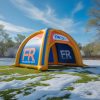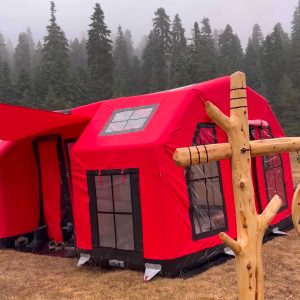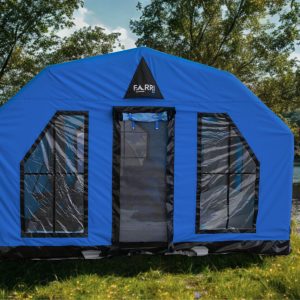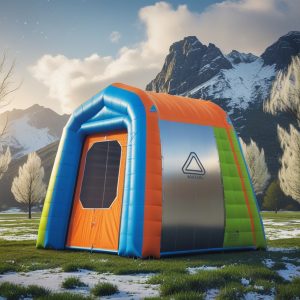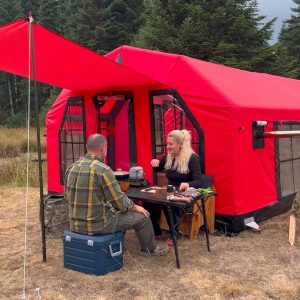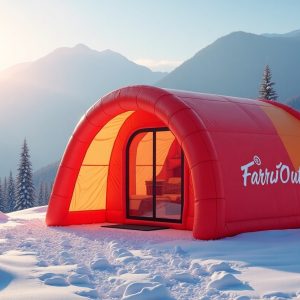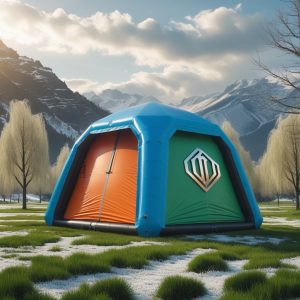
Inflatable Tent Waterproof
When you’re out camping, staying dry is crucial for comfort and safety. That’s why having a waterproof inflatable tent is essential for outdoor adventures, especially during rainy or wet conditions. Modern inflatable tents are designed to be water-resistant, but there are additional steps you can take to ensure your tent stays dry and weatherproof.
Key Features of Waterproof Inflatable Tents
1. Waterproof Materials
Most inflatable tents are made from high-quality, waterproof materials such as polyester or nylon. These fabrics are coated with water-resistant coatings, such as PU (polyurethane), to prevent water from soaking through the tent fabric. The waterproof rating of these tents typically ranges from 1,500mm to 5,000mm, which indicates how much water pressure the fabric can withstand before it leaks.
2. Sealed Seams
One of the most common places for water to leak into a tent is through the seams. To ensure your inflatable tent stays waterproof, it’s important that the seams are sealed with a waterproof tape or seam sealer. Many high-quality inflatable tents come with factory-sealed seams, but you may want to check them regularly for wear and reapply seam sealer if necessary.
3. Rainfly Protection
A rainfly is an extra waterproof cover that goes over the main body of the tent. It provides an additional layer of protection from rain, snow, and moisture, ensuring that water doesn’t penetrate the tent from the top. Some inflatable tents come with an integrated rainfly, while others may require you to purchase one separately.
Additional Tips for Waterproofing Your Inflatable Tent
1. Use Waterproofing Spray
If you feel that the water-resistance of your inflatable tent has diminished over time, you can apply a waterproofing spray to the outer fabric. These sprays create a protective layer that helps repel water and keeps your tent dry in wet conditions. Be sure to apply the spray evenly and follow the manufacturer’s instructions.
2. Choose a Flat and Elevated Spot
Setting up your inflatable tent in a low-lying area or pooling water can lead to water seeping into the tent. To avoid this, always choose a flat, elevated spot to set up your tent. This will help water flow away from the tent, preventing flooding inside.
3. Proper Ventilation
While waterproofing is important, condensation can still build up inside the tent, especially in humid or wet conditions. Look for inflatable tents with adequate ventilation, such as mesh windows or vents, to allow airflow and reduce moisture buildup inside.
Conclusion
A waterproof inflatable tent is essential for keeping you dry and comfortable during your outdoor adventures. By ensuring your tent is made from high-quality materials, sealing the seams, using a rainfly, and applying waterproofing sprays, you can greatly improve its ability to handle wet weather. With these steps, you can confidently enjoy your camping experience, even in the rain!

 FARRI OUTDOOR | Inflatable Tents | Air Tents |
FARRI OUTDOOR | Inflatable Tents | Air Tents |
